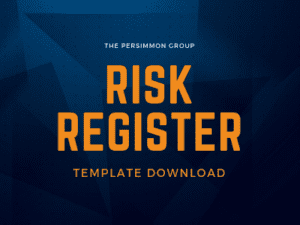Quick Links


As projects move out of planning stages, actively monitoring for and tracking risks continues to be important. Understanding risks early in a project is critical, but continuing to be aware of logged risks and capturing new ones can be the difference between being prepared and being caught off-guard.
When tracking risks, it’s important to evaluate their potential impact and how likely they are to occur. This allows the project team to focus on the most imminent and most impactful risks first. Understanding how the team will respond to risks (should they occur) is another component of risk management that can be pre-planned and leave the project team feeling less uncertain should the risk be realized.
When capturing risks in a risk log, important items to capture are:
Risk ID: A unique number identifier that is logged with each risk.
Project: the name of the project to which the risk is primarily related.
Description: Detailed description of the risk including any supporting context, history, or other information that provides an understanding of the risk.
Status: A designation of the current status including:
Probability: A numerical indication of the risk event probability:
Project Impact: A numerical indication of impact to the project effort:
Business Impact: A numerical indication of impact to the effort from the business perspective:
Assessment: A Numerical value of the Probability x Project Impact x Business Impact to understand the importance of each risk for prioritization purposes.
Triggers: Specification of what will trigger the risk event to occur – it may be one or many things.
Phase: The specific project phase where the risk is anticipated to occur.
Mitigation Plan: The plan to be executed to prevent the risk from occurring.
Updates: Any updates that occur throughout the project that indicate progress or change to managing the risk.
Owner: The team member who owns the risk item. They are responsible for assuring mitigation plans as well as contingency plans.
For more information about maintaining a project log, see the Master Project Log that also includes logs for Action Items, Assumptions, Issues, and Change Requests.
Preview and Download the Risk Register Template.
Practical strategies to help you thrive in Leadership, Project Management, and more.

11 East 5th Street
Suite 300
Tulsa OK 74103
918-592-4121
888-392-7101
| Cookie | Duration | Description |
|---|---|---|
| cookielawinfo-checkbox-analytics | 11 months | This cookie is set by GDPR Cookie Consent plugin. The cookie is used to store the user consent for the cookies in the category "Analytics". |
| cookielawinfo-checkbox-functional | 11 months | The cookie is set by GDPR cookie consent to record the user consent for the cookies in the category "Functional". |
| cookielawinfo-checkbox-necessary | 11 months | This cookie is set by GDPR Cookie Consent plugin. The cookies is used to store the user consent for the cookies in the category "Necessary". |
| cookielawinfo-checkbox-others | 11 months | This cookie is set by GDPR Cookie Consent plugin. The cookie is used to store the user consent for the cookies in the category "Other. |
| cookielawinfo-checkbox-performance | 11 months | This cookie is set by GDPR Cookie Consent plugin. The cookie is used to store the user consent for the cookies in the category "Performance". |
| viewed_cookie_policy | 11 months | The cookie is set by the GDPR Cookie Consent plugin and is used to store whether or not user has consented to the use of cookies. It does not store any personal data. |